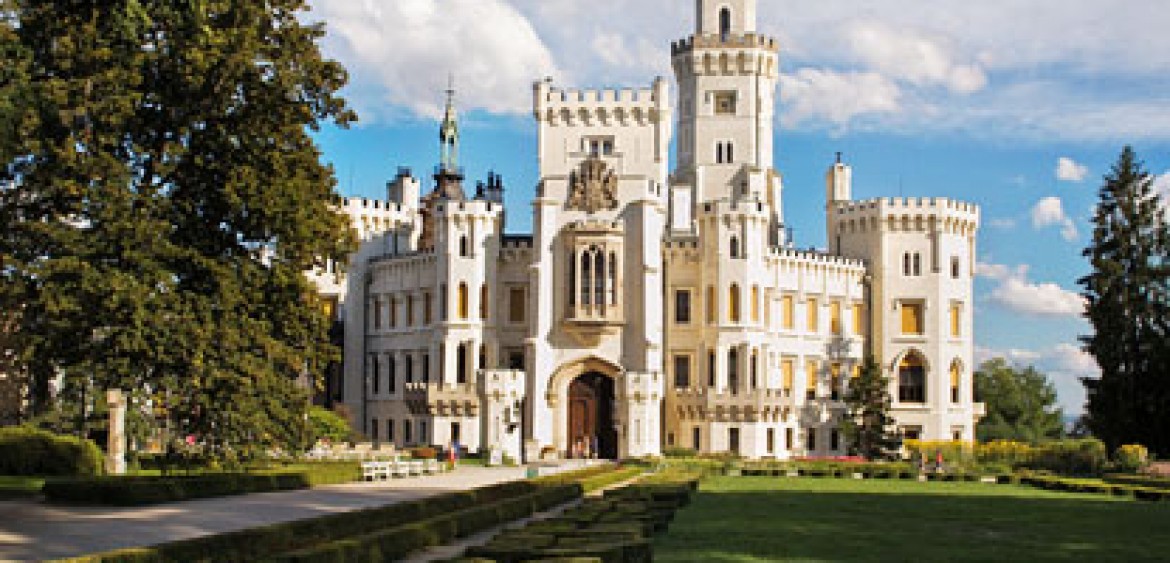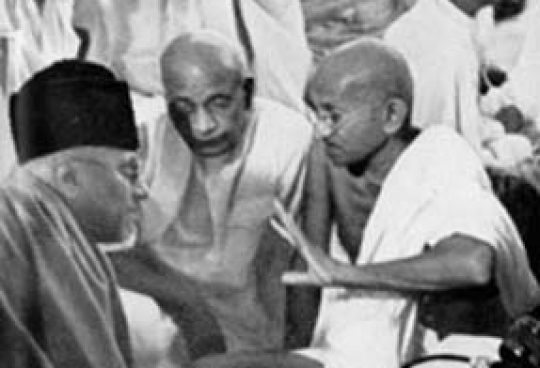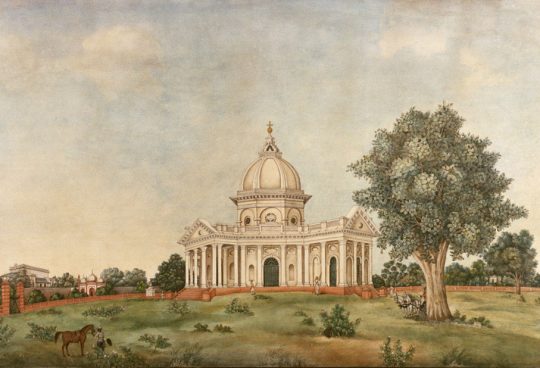When the clandestine love affair between Irene Adler, the Prima Donna of the Imperial Opera of Warsaw and Wilhelm GottsreichSigismond von Ormstein, Grand Duke of Cassel-Felstein screamed through the columns of the Strand Magazine in the year 1891, it threatened the continuity and existence of a hereditary monarchy. A hundred years later, I recall the anxiety and trepidation which hung on our youthful brows as we devoured the developments in the case that teased the most perfect reasoning and observing mind of the twentieth century. It was agonizingly humiliating to accept that the world’s greatest detective, the idiosyncratic genius Sherlock Holmes had to admit defeat in solving the Scandal in Bohemia.
It was to this Bohemia, which Dr.Watson introduced me to as a school girl, that I thought Euro city 127from Dresden was bringing me to this summer. Sadly, though predictably, the crowded platform of PrahaHolesovicei, one of the two international rail stations that link the Czeck nation to the rest of Europe waved away any lingering memories of Holmes and Irene Adler. I detected a frisson of emotions racing through my heart and suspicions pounding my mind. But it takes you less than three minutes to understand that Bohemia is a nation in a rush to undo the languid indifference fostered in the past decades of communist governance.
Prague sums up Bohemia. So visiting Prague is a great way to experience Bohemia. Prague be reached by air, road or rail but we chose to come in by rail having spent a few days in Baden-Baden, the idyllic Black forest town in south western Germany. By taking the day time rail road, we sighted the East German cities of Leipzig, Weimar, Dresden, befriended the steadily flowing Elba, to touch base at Prague lying to the east of Germany.
Prague is breathtakingly beautiful. It is a joy to tread on its streets. I have seen few cities that can match this resplendent Bohemian jewel in its natural grace or architectural elegance. But at times, as it happened to us, the nasty tricks of an occasional scamp or the hurtful scowl of an indifferent churl, can dull the glitter of this gem. No wonder, arriving in Prague from, a western nation can create a wee bit of consternation and frustration. When in Prague never hop into a private Taxi, no matter how persistent the cabbie is. They are there just to rip you off. Call the cab company or better still, take the tourist friendly public transport. If you find the tourist information windows in the metro stations unfriendly, don’t get ruffled. The Czechs are a friendly lot. They do sometimes have a problem understanding English, but are willing to help out. And don’t forget to convert your Euro’s into Czech Crowns at the authorized money changers only, tricksters lurking around metro stations and historic sights could be a tad too eager to profit at your expense.
Warned sufficiently about the do’s and don’ts, it’s time to warm up to the charms of Prague. Lying in the heart of Bohemia,(Čechy), Prague(Praha) on the gently rolling Vltava river, has been on the ancient trading routes of central Europe. However it was in the fourteenth century, during the reign of the Holy Roman emperor, Charles IV, that the beautiful city the world admires today, was built. Prague revels in its architectural bounties. Spend time in Old Town(StaréMěsto) with its Old Town Square The Astronomical Clock on Old Town Square ,The picturesque Charles Bridge ,The vaulted gothic Old New Synagogue of 1270, The New Town (Novéměsto) with its busy and historic Wenceslas Square ,MaláStrana (Lesser Quarter). The astounding Prague Castle – reputedly the largest castle in the world, with its truly magnificent St. VitusCathedral ,Josefov (the old Jewish quarter) and Old Jewish Cemetery and Old New Synagogue National Museum ,Vyšehrad castle & cemetery are not to be missed. The Mucha Museum- showcasing the Art Nouveau works of AlfonsMucha and the Franz Kafka museum- a one room temple for the devotees of this master of the existential dilemma, both girdling the quaint Old Town Square were on my beat.
You can explore Prague on your own or take any of the numerous guided tours. I was determined not to miss the Franz Kafka museum housed in his home in the old town square. As our hotel was happily located at the epicenter of touristy Prague in Hybernska, we marched out towards NamestiRepublik (Rupublic square), the starting point for all adventures with the Czech Jewel. The Celetna road lined with dozens of shops ranging from the mighty Swarovski to tiny little kiosks display Bohemian crystal in all colours, cuts and prices, leads on the to the distractingly quaint Old town square surrounded by Staromestskaradnice (the historic Old town hall complex) with its massive 14th century Gothic Tower and the astronomical clock with its gyrating goblins who parade inside the clock as the hour bell chimes pulled by a giggling skeleton. The renaissance façade of the neighboring edifice, and the towering St. Nicholas church with priceless 17th century frescoes adorning its dome, together with the modest one room home of Franz Kafka, the greatest litterateur of the twentieth century; The piece the resistance, Jan Hus, the grand Art Nouveau monument arising from the centre of the old town square mark, herald the lovely sights on the tour of this charming mother of all cities.
Following any of the cobble stone streets, crowded with eager tourists, towards the languid Vltava river, one can reach the historic Charles bridge ( Karluv Most) built by King Charles IV to connect the Prague Hrad ( castle) with the lower town. Guarded on either ends with gigantic towers the bridge leads towards the enchanting Prague castle with its equally awesome St. Vitus Cathedral and royal palaces.
The most romantic view of the imposing Prague Castle is from the Charles Bridge. While the castle dates back to the ninth century, addition and refurbishing has been a continual process as it continues to be the seat of authority even today. It is from here that Czech kings, Holy Roman Emperors and Presidents of erstwhile Czechoslovakia and later day Republic of Czech conduct their office! The Prague castle is not one building but is a collection of palaces, churches, the St. Vitus Cathedral, monastery, gardens and museums and the picturesque Golden Lane. While most of the places are accessible, some demand an entry fee from visitors.
Tour of the Prague castle begins with the entry into the St. Vitus Cathedral. It is the nation’s most important cathedral. Built over a period of five hundred years, the imposing structure was completed only in the twentieth century. With a neo- gothic façade and baroque interiors adorned with exquisite twentieth century stained glass windows, the cathedral is a delight to behold. The Chapel of St. Wenceslas, the patron saint of the Czechs where the relics of the saint are kept is the most outstanding part of the Cathedral. Peter Parler, the renowned architect built this between 1344 and 1364. The glorious Crown jewels including the crown of St. Wenceslas are reportedly housed in the St. Vitus Cathedral, which are however not open for public viewing.
As you exit the splendorous cathedral, repair towards the old royal palace with the notorious defenestration window. The window in this palace takes the credit for coining the term defenestration which literally means throwing someone out of a window. Czech history recording the conflict between Catholics and Protestants throws up “defenestration of Prague” twice. Once in 1419 and the second time in 1618. It is the second defenestration in 1618, when the protestant assembly threw two imperial governors owing allegiance to the catholic king Ferdinand, from the thirty metre high windows of the Bohemian chancellery in the Royal Palace of the Prague castle, which sparked of the thirty year war in Europe. The lucky gentlemen landed on a dung hill and survived !
Follow the way out from the Royal palace towards the Church of St. George with a baroque façade and thence onwards to the Golden Lane, the most attractive part of Prague castle. The lane with tiny cottages was built originally to house the castle marksmen and goldsmiths. Today it serves as a pretty lane with shops dispensing souvenirs. The powder tower and the royal gardens are the other worthwhile sights in the castle. To savour the beauty and, understand the history of the bohemian kingdom spending three hours in the castle premises is absolutely necessary. You could spend a whole day too. I know of no other place except this wonderful castle, from where I can peep out and discover an ocean of red tiles heaving under the weight of giddying spires that call out to the heavens. Prague is her most beautiful from the castle and none should miss this.
There are a few other places within striking distance from Prague that can be visited on a day long trip. The glass factory in Nizbor, and the historic Karlstein castle are a couple of the nearest ones. Take the tour or hit out on your own as we did. Getting on to a regular Czech train from the HlavniNadrazi metro staion in Prague, we set off for Rŭckl Crystal factory in Nizbor, a tiny village with 1500 people, 54kms from Prague. Rŭckl Crystal is one of the largest manufactures of crystal and glass in Bohemia. The strapping guide in the factory, radiating a great deal of bonhomie, showed us around the factory which surprisingly seemed more of a medieval guild masters work yard than a dehumanized machine shop in the twenty first century. Loaded with gifts for all those friends back home we galloped back to the derelict train station to catch the train to our next stop on the tour, Karlstein castle.
Karlsteincastle, is a fourteenth century castle built by the Holy Roman emperor, the greatest of all Czech rulers, Charles IV. A not too easy thirty minute trek uphill from the station through breathtakingly beautiful vistas of green meadows rolling away from the river , took us up to the imposing castle which is a combination of late Gothic and later renaissance architecture. The English Language guided tour for 250 KC per head, with student discount for my daughter, was a great help as the exhibits, some of which date back to as early as the fourteenth century, do not display information of any sort. This castle is unique among Czech castles as it was built exclusively as a store house for the royal jewels which are now housed in the Prague castle. The castle built around 1348 comprises of the Imperial palace with the bed chambers of Charles IV and his audience hall, the deanery, the impregnable Marion Tower, the well preserved Clock Tower and the Well Tower which houses an outlet selling traditional and historical ceramics and stoneware. We tore away from the last ten minutes of the tour as the last train back to Prague was at 5.30 pm with not the remotest chance of engaging a taxi if we were to miss the dear train.
Bohemia is so beautiful. Prague, for its architecture and tranquil Bohemia for its idyllic environs. But strangely so few Indians visit it. If I had any misgivings about coming to Prague, that evening on the platform in PrahaHolesovicei, I beg her forgiveness and plead with Prague for another chance to glance upon her undying charms.



